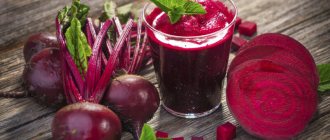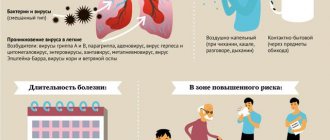Sodium bicarbonate, sodium bicarbonate, sodium bicarbonate, baking soda are the names of the same chemical compound, known to every person as “baking soda.” It is a good leavening agent for dough. Soda solution can relieve toothache. But this is not the entire range of applications of this “miracle” substance. In fact, it is difficult to do without sodium bicarbonate in everyday life, in cooking, in medicine, and in many other areas of activity.
History of creation
Baking soda has been used in baking since ancient times. It was found by archaeologists during excavations of caves of the 1st-2nd centuries BC. Then it was extracted from the ash of seaweed or found in the form of a mineral. This chemical compound was actively used in ancient Egypt.
For the first time, the chemical formula of the compound - NaHCO3 - was established by the French scientist Henri de Monceau. Thanks to this discovery, baking soda began to be produced synthetically, which significantly reduced its cost and expanded its range of uses. Since the discovery of the formula, methods for its synthesis have constantly changed, improved, and become more economically profitable.
Methods of obtaining
Content:
- History of creation
- Chemical properties
- Beneficial features
- Possible harm
- Medical use
- Use in cooking
- Application on the farm
- Use in cosmetology
- Other uses
- Industrial use
- How to select and store
The first method of industrially producing sodium carbonate was to dissolve rock salt in water, mix the solution with limestone and charcoal, and then heat it in a furnace. However, as it turned out, the output was not baking soda, but soda ash. In addition, this activity left a lot of toxic waste (calcium sulfide and hydrogen chloride), so it was quickly abandoned.
Today, baking soda is produced in two ways - “dry” and “wet”, each of which is based on the carbonization reaction (enrichment of the solution with carbon dioxide).
Types of soda
From a chemical point of view and area of application, there are several types of soda: baking soda (drinking soda), ash soda (linen soda) and caustic soda (sodium hydroxide).
Who drinks soda and why?
In 2014, the Journal of Clinical Pharmacy and Therapeutics published a review on the misuse of baking soda. The authors of this review assessed data on baking soda poisonings reported by the California Poison Control System (CPCS) over 12 years from 2000 to 2012.
The review looked at 192 cases and found:
- 55.8% of those poisoned were women aged from 2 months to 79 years.
- The most common reasons for use: 60.4% - as an antacid, 11.5% - to pass a drug test, 4.7% - to treat urinary tract infections.
- Medical attention was required in 55% of cases, and in 12 cases patients required hospitalization.
Chemical properties
Sodium bicarbonate is a weak acid salt of carbonic acid. They are small colorless crystals, which, when the temperature rises to 50-60°C, begin to “give up” a molecule of carbon dioxide, gradually decomposing to sodium carbonate (soda ash).
Reacts with acids to form salts (chloride, acetate, sodium sulfate) and carbonic acid, which instantly breaks down to water and carbon dioxide. The powder is poorly soluble in water and is easily separated by filtration.
Beneficial features
The benefits of sodium bicarbonate come from its alkaline pH. It is the ability to react with acids and alkalize the environment that underlies the following beneficial properties of baking soda:
- acid neutralizing;
- antiseptic;
- anti-inflammatory;
- antipruritic;
- drying;
- antifungal;
- sputum thinner;
- softening and whitening skin.
Such a variety of useful properties allows this compound to be used in folk and traditional medicine to treat many diseases and normalize human well-being in various pathological and physiological conditions.
Baking soda for hair and dandruff
Baking soda is good for hair. It can be added at the rate of ½ teaspoon per 1 cap of shampoo (natural). Wash your hair with the resulting product. Oily hair - once a week. Dry - 1-2 times a month. Your hair will be clean and shiny for a long time.
A folk recipe with baking soda will help with dandruff. Forget about shampoos for a while. Try washing your hair with baking soda. This is how you do it: first wet your hair, then lightly massaging, rub baking soda into your scalp by the handful. Then rinse the baking soda off your hair with plenty of water and dry it. For some it’s earlier, for others it’s later – but the dandruff will go away.
The main thing is don't give up. Don't be afraid that at first your hair will become drier than usual. Then sebum secretion will be restored. Treating dandruff with baking soda is a proven folk recipe.
Possible harm
Baking soda should be consumed internally in limited quantities and according to strict indications. Bicarbonate crystals in large quantities are toxic to the mucous membrane of the digestive system and can cause severe irritation and allergic reactions.
It is not recommended to use solutions based on sodium bicarbonate for people suffering from erosive and ulcerative processes of the stomach and intestines, low stomach acidity and anacid gastritis.
If you regularly inhale carbon dioxide vapor or bicarbonate crystals, for example, in the production of soda, irritation of the respiratory mucosa may occur.
Frequent use of soda solution threatens persistent organic disorders of the digestive system. Alkalinization of gastric juice occurs, as well as a shift to the highly alkaline side of the intestinal contents.
What should I do if I have an ulcer?
Baking soda, as well as over-the-counter antacids, can temporarily relieve stomach ulcer symptoms. However, antacids are not a cure for stomach ulcers.
This is because stomach ulcers most often occur as a result of taking nonsteroidal anti-inflammatory drugs (NSAIDs), such as ibuprofen.
For ulcers caused by NSAIDs, you may need to reduce or stop taking the NSAID. Antibiotics may be needed for ulcers caused by H. pylori.
Antacids, including baking soda, can interfere with the action of antibiotics. While treating an ulcer, your doctor may prescribe other medications, such as proton pump inhibitors, to reduce stomach ulcer symptoms and allow the ulcer to heal.
Medical use
Sodium bicarbonate is widely used in medicine. At the same time, soda is used in various fields: dermatology, gastroenterology, cardiology, pulmonology, dentistry, toxicology, and ENT pathologies. Sodium bicarbonate helps against heartburn, nausea, motion sickness.
This substance is used internally in the form of a soda drink and externally in dry form, in the form of a paste or aqueous solution for rubdowns, lotions, and baths.
In dentistry
Rinsing the mouth with a solution of sodium bicarbonate relieves local inflammation, relieves toothache, strengthens gums, and eliminates unpleasant odor. Baking soda can be used as a toothpaste substitute to whiten teeth.
In gastroenterology
For nausea, make a strong soda solution (1 tablespoon per glass of water) and drink it slowly. For severe heartburn, it is recommended to dissolve a teaspoon of soda in a glass of water and drink. Thus, the patient’s condition improves for some time. However, it should be noted that if you experience frequent heartburn, you should consult a doctor and not treat yourself with soda at home. The habitual intake of an alkaline solution causes a neutralization reaction between hydrochloric acid and soda, resulting in the release of a lot of carbon dioxide, which causes bloating. The resulting carbon dioxide irritates the chemoreceptors of the stomach, thereby stimulating a reflex increase in the formation of gastric juice.
In cardiology
Hydrocarbonate baths help normalize blood pressure and heart rate, which is useful in case of interruptions in the functioning of the heart and blood vessels. Soda increases urination, which reduces the total volume of circulating blood. As a result, the pressure of the blood column on the walls of blood vessels decreases and blood pressure drops slightly.
Taking sodium bicarbonate solution orally with a sharp increase in blood pressure is a first aid remedy for a hypertensive crisis at home. If you drink a soda drink along with antihypertensive medications, the effect will increase.
In dermatology
Soap and soda baths and applications help get rid of fungal nail infections, as well as calluses and corns. A paste of baking soda and water should be used to treat areas of skin burns when exposed to acids, as well as areas of skin with sunburn. You need to moisten the areas of mosquito bites and other insects on the skin with water with baking soda dissolved in it. For severe itching, you can sprinkle the skin with dry powder.
If you have problems with the smell of sweat, treat your armpits with a soda solution. Bacteria and fungi that multiply in sweat and produce acids that cause an unpleasant odor will die. Sodium bicarbonate neutralizes these acids and exhibits a moderate antiseptic effect.
Hydrocarbonate-based foot baths are made for fungal diseases of the feet and nails. They also help soften rough heel skin before a pedicure. Hot baths of a strong solution of baking soda help with felon (purulent inflammation under the nail).
For ENT pathologies
Sodium bicarbonate, when released into viscous sputum, reacts with the acids contained in it. The resulting bubbles of carbon dioxide and water dilute the mucus, increase its quantity and make coughing easier.
To prepare an expectorant for tracheitis, laryngitis, bronchitis, as well as for severe cough, dilute a teaspoon of baking soda in 200 ml of warm milk. This elixir is drunk before bed. Instead of such a drink, you can do steam inhalations with soda. A tablespoon of powder is diluted in a liter of hot water and breathed over it. To enhance the effect, you can add a few drops of essential oils of eucalyptus, pine or rosemary to the solution. Gargling with a solution of salt and soda relieves inflammation of the tonsils with sore throat.
Intravenous administration of a sterile aqueous solution of sodium bicarbonate is often used in intensive care, infectious diseases departments and toxicology for poisoning and intoxication. metabolic acidosis.
Baking soda: healing the body
Relieves heartburn
Heartburn is also known as acid reflux. This is a painful, burning sensation that starts in the upper region of your stomach and travels up to your throat. Heartburn is caused directly by acid reflux from the stomach and up the esophagus, the tube that connects your stomach to your mouth.
A few common causes of reflux are overeating, stress, and eating fatty or spicy foods.
Baking soda can help treat heartburn by neutralizing stomach acid. Dissolve 1 teaspoon of baking soda in a glass of cold water and drink the mixture slowly ().
Can be used as a mouth rinse
Mouth rinse is a great addition to your regular oral hygiene routine. This usually involves using a special mouthwash that rinses to reach the corners of your mouth and the crevices of your teeth, gums and tongue that may be missed during brushing.
But many people use baking soda dissolved in water as a replacement for mouthwash. It can help freshen breath and provide antibacterial and antimicrobial properties ().
The recipe for soda water for mouth rinse is simple. Add half a teaspoon of baking soda to half a cup of warm water, and then rinse your mouth as usual.
Soothes ulcers (ulcers in the mouth and corners of the mouth)
Painful sores or sores are small sores that can form inside your mouth. Unlike herpes sores, sores do not form on the lips and are not contagious.
Research has shown that baking soda as a mouthwash is excellent for treating canker sores, making them smaller and disappearing completely ().
You can use baking soda to treat sticks using the recipe in the previous paragraph. Rinse your mouth with this mixture once a day until the wound heals.
Whitens teeth
Baking soda is a popular home remedy used to whiten teeth.
Related articles:
- Rosemary - a herb for health, uses and benefits...
- Alfalfa - beneficial properties and contraindications
Many studies have shown that toothpaste containing baking soda is better for teeth whitening and plaque removal than toothpaste without baking soda ().
This is because baking soda has mild abrasive properties that help break down the bonds of molecules that stain teeth. It also has antibacterial and antimicrobial properties that can help fight harmful bacteria and tooth decay ().
Works as a deodorant
It's surprising that human sweat has no odor. Sweat only acquires an odor when bacteria appear and multiply in this moist environment. These bacteria turn your sweat into acidic waste, which gives your sweat an unpleasant odor.
Baking soda can eliminate sweat odor by making the odor less acidic. Try applying a small amount of baking soda to your armpits and you will notice the difference ().
Note that baking soda does not eliminate sweat; it kills bacteria and removes unpleasant odors.
May improve exercise performance
Baking soda, also known as sodium bicarbonate, is a popular supplement among athletes.
Some studies show that baking soda can make you more resilient, especially during cardio activities such as intense workouts and fast running (,).
During high-intensity exercise, your muscle cells begin to produce lactic acid, which is responsible for the burning sensation you get during exercise. Lactic acid also lowers the pH level in your cells, which can lead to muscle fatigue. Baking soda has a high pH level, which can help curb feelings of fatigue, allowing you to exercise longer ().
For example, one study found that people who took baking soda exercised an average of 4.5 minutes longer than people who did not take baking soda ().
Doctors recommend taking baking soda at the rate of 200 mg of powder per kilogram of body weight. Usually the solution is prepared in 2 glasses of warm boiled water. You should drink a soda drink 2 hours before training.
Treats itching and sunburn
A baking soda bath is often recommended as a treatment for irritated, itchy skin. These baths are especially effective against insect bites, including bees ().
Additionally, baking soda has been shown to help reduce itching from sunburn. It's especially effective to combine baking soda with other ingredients, such as cornstarch and oatmeal, to soothe sensitive skin ().
To create a baking soda bath, add 1-2 cups of baking soda to a bathtub filled with warm water. Make sure the affected area of skin is completely submerged in water.
To treat small areas of skin, you can make a paste of baking soda. Dissolve baking soda in a small amount of water to a paste consistency. Apply a thick layer of paste to the affected area ().
Softens rough skin
Very often, skin that is subjected to long-term friction or pressure becomes rough and hard. This especially applies to the skin of the feet. Activities that typically cause hard calluses are frequent walking, gardening, or sports. Although calluses are not necessarily serious, they can cause pain and discomfort when you press on them.
Studies have shown that a baking soda bath does an excellent job of softening rough skin. By lightly massaging your feet in a bath, baking soda will help remove dead skin cells and reduce discomfort ().
Baking soda is also an effective remedy to get rid of dandruff at home.
May slow progression of chronic kidney disease
People with chronic kidney disease (CKD) slowly lose kidney function. And the kidneys are incredibly important because they help remove excess waste and water from the blood. At the same time, they help balance important minerals such as potassium, sodium and calcium.
Research shows that baking soda may help slow the progression of chronic kidney disease ().
In a study of 134 adults with kidney disease, it was found that those who took sodium bicarbonate (baking soda) supplements were 36% less likely to develop kidney failure than people who did not take supplements ().
Therefore, if you are suffering from nephritis or any other chronic kidney disease, consult your doctor about adding baking soda to the treatment of your condition.
Use in cooking
Sodium bicarbonate is also widely used in cooking. The ability of soda to release carbon dioxide when quenched with vinegar allows it to be used as a leavening agent. Slaked soda adds fluffiness to omelette and dough. You can quench soda with vinegar or add powder to sour cream or kefir dough. In the second case, lactic acid will play the role of vinegar.
Adding it to legume dishes allows you to reduce their cooking time. Using baking soda in a meat marinade can soften tough muscle fibers. Berry and fruit mousses, when a pinch of soda is added to them, become sweeter, and coffee and tea become more transparent and aromatic.
In order to get rid of nitrates in vegetables, they need to be soaked in a soda solution. Darkened potatoes can be lightened using the same method.
From posts on forums
“...when my breast tumor grew from 3 cm to 6.5 cm in a fairly short period of time and became localized, he offered me surgery. But I refused - I no longer felt trust in him. The doctor simply threw my medical card on the table and said that he would not give me more than 5 years to live! Today is 2010, I have three granddaughters and an 11-year-old daughter, whom I gave birth to myself without any caesarean section at the age of 41.”
“First of all, I want to say that I treated female forms of oncology, and you need to drink soda internally based on 1 teaspoon per glass of warm water. Drink little and often. I didn’t give injections, but I douched with a hot solution of soda from the following ratio: 0.5 liters of boiled water to 1 dessert spoon of soda. I did such douching as often as I could, at least 5-6 times a day. You can take an enema after consulting with your doctor, because everyone has their own diagnosis, and what is life for one may not be good for another. I also want to warn against consuming dairy products, which contribute to the formation of callogens in the body and clog the lymph. It is necessary to *carry out cleansing procedures, take an enema* to free the rectum from fecal stones. This will already give a weakened body great relief. I did it according to Breg: a week - every day, a week - every other day, a week - every two days, then every three and up to once a month. Then such a patient needs to completely change his lifestyle and diet. I fasted for 40 days on apple juice. Then for 7 years I didn’t eat meat, dairy products or sweets at all. Dairy products clog the lymph flow, and sugar feeds cancer cells. You can’t write about this in a few words, but I can briefly say that according to research, the brain considers impulses coming from cancer cells as an impulse from a hematoma (bruise) or wound and begins to treat them, feed them with glucose, which leads to healing and resorption of wounds and hematomas , and in the case of cancer - to the growth of cancer cells... Therefore, sugar, milk and meat of all types must be excluded. Focus on vegetables, preferably red ones, apples, carrots and cabbage. Again, you need to do everything individually, listen to your body and your well-being. And find vegetables that are as clean as possible and in no way modified.”
“I take it every day, sometimes under severe stress, up to eight times a day, a coffee spoon. And I just pour it on my tongue and wash it down with water.”
“I advise you to take bicarbonate of soda twice a day every day. For pain in the epigastric region (tension in the solar plexus), baking soda is indispensable. And in general, soda is the most beneficial remedy, it protects against all kinds of diseases, starting from cancer, but you need to accustom yourself to take it every day without skipping ... "
“To ease diabetes, take soda...”
“The dose of soda for a boy (diabetic at 11 years old) is a quarter of a teaspoon four times a day.”
“Constipation is treated in various ways, overlooking the simplest and most natural one, namely: simple baking soda with warm water. In this case, the metal sodium acts. Soda is given for widespread use by people. But they don’t know about this and often use harmful and irritating medications... Soda is good because it does not cause intestinal irritation.”
Application on the farm
The substance is also irreplaceable in everyday life. It is an excellent cleaning agent. To restore their shine, chrome items and silverware are rubbed with dry soda, washed with soapy water, and then wiped dry with a soft cloth.
Sodium bicarbonate powder applied to a damp sponge will remove scratches and abrasions on vinyl flooring. Tile, kitchen stove, sink and plumbing fixtures can be cleaned of dirt by treating them with a thick mixture of baking soda and water. The same mixture helps get rid of the specific cat odor in places where there were “marks”.
To remove odors
The good hygroscopicity of sodium bicarbonate is the reason why it quickly absorbs odors, so it can be used to eliminate various odors. To get rid of unpleasant odors in the refrigerator, you need to pour dry powder into a glass and place it in the refrigerator door. By changing the contents of the glass as needed (once every 1-2 months), you can permanently get rid of the specific “refrigeration” smell.
If the smell of sour milk persists, the “smelling” containers should be cleaned with dry powder. Do the same with dishes that smell of fish.
If you pour a few tablespoons of powder into the drain hole, and after a few minutes turn on warm water, you can eliminate the unpleasant odor from the siphon under the sink.
Baking soda will also help deal with the unpleasant odor from the carpet. To do this, sprinkle the carpet with powder, leave it for 20-30 minutes, and then vacuum it thoroughly. However, this method is only suitable for non-fading carpets.
Using baking soda, you can also prevent the appearance of unpleasant odors, for example, from a washing machine or dishwasher when they are idle for a long time. When leaving home for a long time, you should rub the inside surface of the machines with dry bicarbonate and leave their doors ajar, and after returning, run them in the rinsing mode.
For clothing care
When machine washing, it is good to add baking soda to the washing powder. This will help get rid of the unpleasant odor in the washing machine, improve the quality of washing and the aroma of washed clothes. Clothes that smell bad can be washed in a machine by sprinkling them generously with baking soda.
A wet swimsuit will not become moldy and will not smell unpleasant if, after swimming in a pool or natural body of water, you put it in a bag with soda, and rinse it thoroughly and dry it at home.
TAKING SODA
You need to take soda on an empty stomach, 20-30 minutes before. before meals (not immediately after meals - it may have the opposite effect). Start with small doses - 1/5 teaspoon, gradually increase the dose, bringing it to 1/2 teaspoon.
You can dilute the soda in one glass of warmly hot boiled water, or take it in dry form, washing it down (required!) with hot water (one glass). Take 2-3 r. in a day.
To quit smoking: rinse your mouth with a thick solution of soda or coat your mouth with soda and saliva: soda is placed on the tongue, dissolves in saliva and causes an aversion to tobacco when smoking. Doses are small so as not to disturb digestion.
The best prevention of strokes: massage your gums in the morning and evening, after brushing your teeth with baking soda (with a brush or your fingers), dripping hydrogen peroxide into it.
Internal use of soda is a cancer prevention; treatment requires contact with the tumor, so the most effective way to treat breast cancer, skin cancer, stomach cancer, and female cancers at home is where soda can directly reach.
The familiar and commonplace soda has its own ancient history. Baking soda was extracted by our ancestors from the ashes of some plants and was used in everyday life, in cooking and to treat various diseases.
Use in cosmetology
Baking soda is an excellent cosmetic product. A scrub made from crushed oatmeal and dry sodium bicarbonate has a good cleansing and whitening effect. After such a scrub, the skin becomes soft, and its regular use gets rid of acne. To add shine to your hair after washing your hair, you need to treat it with a solution of soda and lemon juice.
For weight loss
Sodium bicarbonate is also used for weight loss. To lose up to 2 kg in one procedure, you can fill a bath with warm water and dissolve 0.5 kg of sea salt and 0.3 kg of regular baking soda in it. Anyone losing weight needs to immerse themselves in such a bath for 20 minutes. In this case, the water temperature should be about 40°C. A soda-salt solution relaxes muscles, relieves fatigue and nervous tension, cleanses lymphatic vessels, and reduces tissue swelling. After a bath, you don’t need to dry yourself: just put on a warm robe. It is better to do such water procedures before bed.
Areas of use
- 1. Prevention and treatment of cancer.
- 2. Treatment of alcoholism.
- 3. Stop smoking.
- 4. Treatment of all types of drug addiction and substance abuse.
- 5. Removal of lead, cadmium, mercury, thallium, barium, bismuth and other heavy metals from the body.
- 6. Removal of radioactive isotopes from the body, prevention of radioactive contamination of the body.
- 7. Leaching, dissolving all harmful deposits in the joints and spine; stones in the liver and kidneys, i.e. treatment of radiculitis, osteochondrosis, polyarthritis, gout, rheumatism, urolithiasis, cholelithiasis; dissolution of stones in the liver, gall bladder, intestines and kidneys.
- 8. Cleansing the body to enhance attention, concentration, balance and academic performance of unbalanced children.
- 9. Cleansing the body of toxic substances produced by irritation, anger, hatred, envy, doubt, dissatisfaction and other harmful feelings and thoughts of a person.
Modern research in the human body, animals and plants, the role of soda is to neutralize acids, increase the body’s alkaline reserves and maintain a normal acid-base balance. In humans, the acidity level of the blood pH should be within the normal range of 7.35-7.47. If the pH is less than 6.8 (very acidic blood, severe acidosis), then the death of the body occurs (TSB, vol. 12, p. 200). Currently, most people suffer from increased body acidity (acidosis), having a blood pH below 7.35. At a pH less than 7.25 (severe acidosis), alkalizing therapy should be prescribed: taking soda from 5 g to 40 g per day (Therapist's Handbook, 1973, pp. 450, 746).
In case of methanol poisoning, the intravenous daily dose of soda reaches 100 g (Therapist's Handbook, 1969, p. 468).
The causes of acidosis are poisons in food, water and air, medications, and pesticides. A lot of self-poisoning of people with psychic poisons occurs from fear, anxiety, irritation, dissatisfaction, envy, anger, hatred... With the loss of psychic energy, the kidneys cannot retain a high concentration of soda in the blood, which is lost along with urine. This is another cause of acidosis: loss of mental energy leads to loss of alkalis (soda). If you take soda correctly (with water, starting with 1/5 teaspoon 2 times a day), then it should not cause any irritation to the mucous membranes. To correct acidosis, 3-5 g of soda per day is prescribed (Mashkovsky M.D. Medicines, 1985, vol. 2, p. 113).
Soda, destroying acidosis, increases the body's alkaline reserves and shifts the acid-base balance to the alkaline side (pH approximately 1.45 and higher). In an alkaline body, water is activated, i.e. its dissociation into H+ and OH- ions due to amine alkalis, amino acids, proteins, enzymes, RNA and DNA nucleotides.
A healthy body produces highly alkaline digestive juices for digestion. Digestion in the duodenum occurs in an alkaline environment under the influence of juices: pancreatic juice, bile, Bruttner gland juice and the juice of the duodenal mucosa.
All juices have high alkalinity (BME, ed. 2, vol. 24, p. 634). Pancreatic juice has a pH=7.8-9.0. Pancreatic juice enzymes act only in an alkaline environment. Bile normally has an alkaline reaction pH = 7.50-8.50. The secretion of the large intestine has a highly alkaline environment pH = 8.9-9.0 (BME, ed. 2, vol. 12, art. Acid-base balance, p. 857).
With severe acidosis, bile becomes acidic pH = 6.6-6.9 instead of the normal pH = 7.5-8.5. This impairs digestion, which leads to poisoning of the body with the products of poor digestion, the formation of stones in the liver, gall bladder, intestines and kidneys.
Opistarchosis worms, pinworms, roundworms, tapeworms, etc. live quietly in an acidic environment. They die in an alkaline environment. In an acidic body, saliva is acidic pH = 5.7-6.7, which leads to the slow destruction of tooth enamel. In an alkaline body, saliva is alkaline: pH = 7.2-7.9 (Therapist's Handbook, 1969, p. 753) and teeth are not destroyed. To treat caries, in addition to fluoride, you need to take soda twice a day (so that saliva becomes alkaline).
Soda, neutralizing excess acids, increases the body's alkaline reserves, makes urine alkaline, which facilitates the functioning of the kidneys (saves mental energy), saves glutamic amino acid, and prevents the deposition of kidney stones. A remarkable property of soda is that its excess is easily excreted by the kidneys, giving an alkaline reaction to the urine (BME, ed. 2, vol. 12, p. 861). But the body should be accustomed to it for a long time (M.O., part 1, p. 461), because Alkalinization of the body with soda leads to the removal of a large amount of poisons (toxins) accumulated by the body over many years of acidic life.
In an alkaline environment with activated water, the biochemical activity of amine vitamins increases many times: B1 (thiamine, cocarboxylase), B4 (choline), B5 or PP (nicotinamide), B6 (pyridoxal), B12 (cobimamide). Vitamins that have a fiery nature (M.O., part 1, 205) can fully manifest it only in an alkaline environment. In the acidic environment of a poisoned body, even the best plant vitamins cannot reveal their best qualities (Br., 13).
Large doses of soda with water are not absorbed and cause diarrhea; they are used as a laxative. To combat roundworms and pinworms, the amine alkali piperazine is used, supplemented with soda enemas (Mashkovsky M.D., vol. 2, pp. 366-367).
Soda is used for poisoning with methanol, ethyl alcohol, formaldehyde, karbofos, chlorophos, white phosphorus, phosphine, fluorine, iodine, mercury and lead (Therapist's Handbook, 1969). A solution of soda, caustic soda and ammonia is used to destroy (degass) chemical warfare agents (KHE, vol. 1, p. 1035).
Industrial use
Baking soda as a food additive E500 is used by the food industry in the production of bakery, flour, confectionery, sausage products, carbonated drinks, as well as for cleaning industrial equipment.
The chemical industry uses sodium bicarbonate in the production of dyes, reagents, household chemicals, and foams. Powder fire extinguishers are filled with bicarbonate.
In light industry, soda is used in tanning, for the production of artificial leather, silk and cotton fabrics.
Advantages
The main benefit of baking soda is the temporary relief of indigestion or heartburn. There is also evidence to suggest that it may reduce muscle fatigue during sports training.
One 2021 meta-analysis found that sodium bicarbonate supplements did improve muscle endurance, but not muscle strength. This was true for participants who took sodium bicarbonate both at rest and during fatigue.
And a 2021 randomized, double-blind study also found evidence that sodium bicarbonate improves performance in trained runners. However, the study was small and almost all participants were men.
Sodium bicarbonate should not be used for fitness or health purposes without medical supervision.






